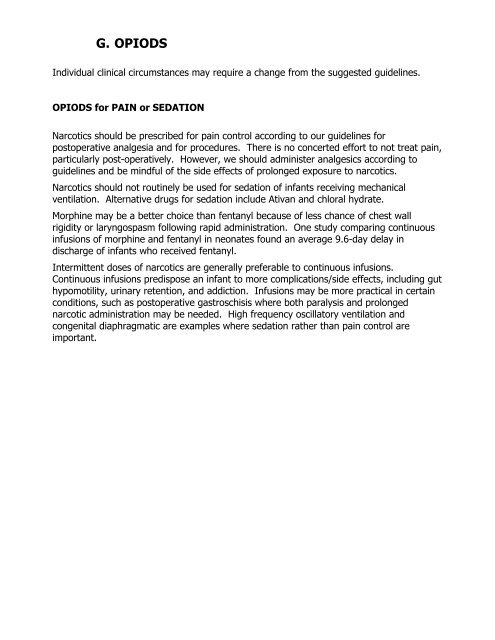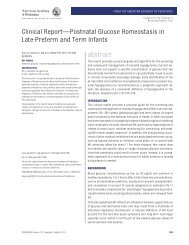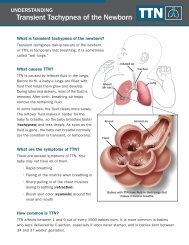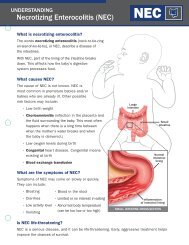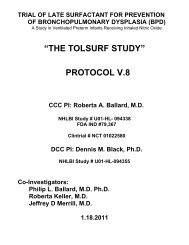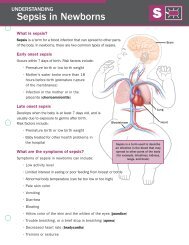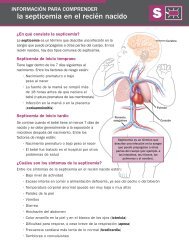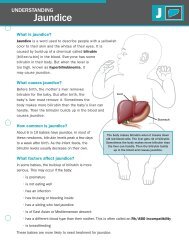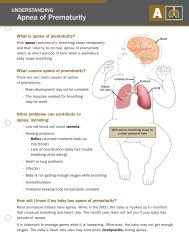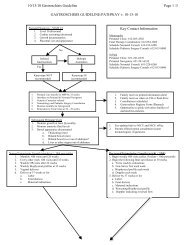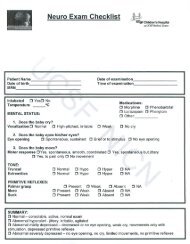NICU-Resident-Manual..
NICU-Resident-Manual..
NICU-Resident-Manual..
- No tags were found...
Create successful ePaper yourself
Turn your PDF publications into a flip-book with our unique Google optimized e-Paper software.
G. OPIODSIndividual clinical circumstances may require a change from the suggested guidelines.OPIODS for PAIN or SEDATIONNarcotics should be prescribed for pain control according to our guidelines forpostoperative analgesia and for procedures. There is no concerted effort to not treat pain,particularly post-operatively. However, we should administer analgesics according toguidelines and be mindful of the side effects of prolonged exposure to narcotics.Narcotics should not routinely be used for sedation of infants receiving mechanicalventilation. Alternative drugs for sedation include Ativan and chloral hydrate.Morphine may be a better choice than fentanyl because of less chance of chest wallrigidity or laryngospasm following rapid administration. One study comparing continuousinfusions of morphine and fentanyl in neonates found an average 9.6-day delay indischarge of infants who received fentanyl.Intermittent doses of narcotics are generally preferable to continuous infusions.Continuous infusions predispose an infant to more complications/side effects, including guthypomotility, urinary retention, and addiction. Infusions may be more practical in certainconditions, such as postoperative gastroschisis where both paralysis and prolongednarcotic administration may be needed. High frequency oscillatory ventilation andcongenital diaphragmatic are examples where sedation rather than pain control areimportant.


